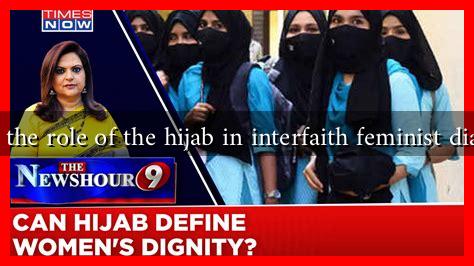-
Table of Contents
What is the Role of the Hijab in Interfaith Feminist Dialogues?
The hijab, a traditional headscarf worn by many Muslim women, has become a focal point in discussions surrounding feminism, identity, and interfaith dialogue. As societies become increasingly multicultural, understanding the role of the hijab in feminist dialogues across different faiths is essential for fostering mutual respect and collaboration. This article explores the significance of the hijab in interfaith feminist dialogues, examining its implications for identity, empowerment, and social justice.
The Hijab: A Symbol of Identity and Faith
The hijab is often viewed as a symbol of Islamic identity and faith. For many Muslim women, wearing the hijab is a personal choice that reflects their beliefs and values. However, the hijab can also be a source of contention in interfaith dialogues, where it is sometimes misinterpreted as a symbol of oppression. Understanding the diverse meanings of the hijab is crucial for fostering respectful conversations among women of different faiths.
- Personal Empowerment: For many women, wearing the hijab is an empowering act that allows them to express their faith and individuality.
- Resistance to Stereotypes: The hijab can serve as a form of resistance against Western stereotypes of Muslim women as oppressed or submissive.
- Community and Solidarity: The hijab can foster a sense of belonging among Muslim women, creating a supportive community that transcends cultural boundaries.
Interfaith Feminist Dialogues: Bridging Differences
Interfaith feminist dialogues aim to create a platform for women from different religious backgrounds to share their experiences and perspectives. The hijab often emerges as a topic of discussion, providing an opportunity to explore the intersections of faith, gender, and culture. These dialogues can help dismantle misconceptions and promote understanding among women of various faiths.
- Shared Experiences: Women from different faiths often face similar challenges related to gender inequality, making the hijab a common point of discussion.
- Building Alliances: By discussing the hijab, women can find common ground and build alliances to address broader issues of social justice.
- Challenging Stereotypes: Interfaith dialogues can challenge stereotypes about the hijab and Muslim women, fostering a more nuanced understanding of their experiences.
Case Studies: Successful Interfaith Dialogues
Several initiatives have successfully incorporated discussions about the hijab into interfaith feminist dialogues, demonstrating its potential as a bridge between different faith communities.
- The Sisterhood of Salaam Shalom: This organization brings together Muslim and Jewish women to foster understanding and combat anti-Semitism and Islamophobia. Discussions often include the hijab, allowing participants to share their experiences and challenge stereotypes.
- Women’s Interfaith Network: This network hosts events where women from various faiths discuss issues related to gender and identity, including the hijab. These dialogues have led to increased empathy and collaboration among participants.
Statistics and Research Findings
Research indicates that interfaith dialogues can significantly impact participants’ perceptions of each other. A study conducted by the Pew Research Center found that:
- 70% of participants in interfaith dialogues reported a better understanding of other faiths.
- 65% felt more comfortable discussing sensitive topics, such as the hijab and its implications.
These statistics highlight the importance of creating safe spaces for dialogue, where women can share their experiences and challenge misconceptions about the hijab and its role in their lives.
Conclusion: Embracing Diversity through Dialogue
The hijab plays a multifaceted role in interfaith feminist dialogues, serving as a symbol of identity, empowerment, and resistance against stereotypes. By engaging in open and respectful conversations about the hijab, women from different faiths can foster understanding, build alliances, and work together towards social justice. As we navigate an increasingly diverse world, embracing the complexities of the hijab within interfaith dialogues is essential for promoting mutual respect and collaboration among women of all backgrounds.
For further reading on the topic, you can explore resources from organizations like The Sisterhood of Salaam Shalom and Pew Research Center.

